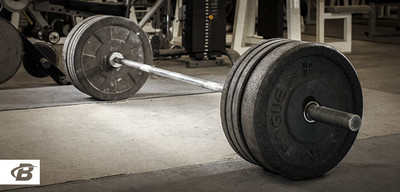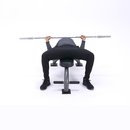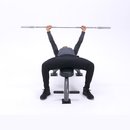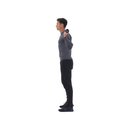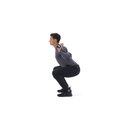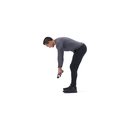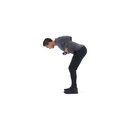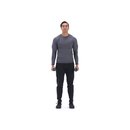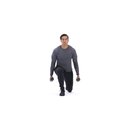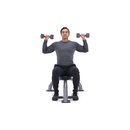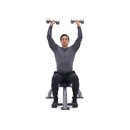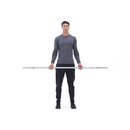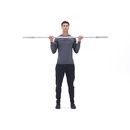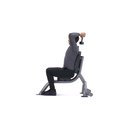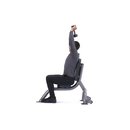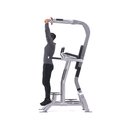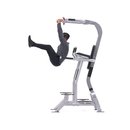Possibly the most intimidating thing for any beginner is simply getting started onto the path of healthy eating and proper exercise. Once you're over that hump and an action plan is in place, then you'll find that your main focus turns instead to maintaining motivational levels and ensuring that you stick with that program.
Having the program in place though needs to be the primary focus initially since it's going to guide you down the path to your goals. Here is some information to get you started.
Who You Are And What Goals You Have
You're someone who might have dabbled in the gym many years ago but have taken an extended time off or someone who has never even set foot inside the gym for a workout. You're new to many of the concepts of what a proper program consists of and are like a sponge, soaking up new information.
The primary goal you want to focus on at this point is fat loss. You might have some desire to also work on building your muscular strength, but that will come down the road once you've stripped off the extra layers you've packed on over the years and are starting to feel leaner. You want a plan that's going to be easy to follow and will get you results quickly.
Your Source Of Motivation
Motivation for fat loss can come from a number of places. Perhaps your doctor has instructed you to drop a few pounds because of your current risk for diseases or other negative health impacts. Or, maybe you have finally had enough with your current body weight and have decided to take action to reduce your weight down to where you feel comfortable.
Some people are also primarily motivated by the thought of having more energy after losing weight and getting active, so this could be something else at play for you. Finally, others simply want to look better.
Whatever your source of motivation is, it's important at this stage to pinpoint it and always keep that in the back of your mind as you progress along.
Your Nutritional Program
As a beginner, what you want to mostly focus on right now with your nutrition program is making small changes on a continual basis to help improve your overall diet. If you attempt to completely overhaul your entire menu, removing all the foods you typically eat and replacing them with chicken, rice, vegetables, and other standard '100% healthy fare', you might find it becomes too much and you're overwhelmed.
Instead, incorporate in more of those healthy foods, while reducing back on your unhealthier choices. As time progresses, start tilting the scale more in favor of solid healthy food choices, while limiting the processed, refined, and higher calorie items. This slow elimination process will be much more doable for you than trying to quit cold turkey.
One thing you do want to start doing at this point is making yourself more aware of the total amount of calories you're taking in on a daily basis. While making healthier choices is incredibly important, if you're still eating too many of those healthy choices, you're not going to achieve your goal of weight loss.
Find an online calorie calculator and start plugging in the foods you typically eat. Then get your measuring cups out and start finding out exactly how many servings you are eating in a normal meal (do not skip this step because serving size will make a dramatic difference on fat loss).
Do this for about two weeks until you gain a better understanding of your total calorie intake. At the same time, try and educate yourself about how many grams of carbohydrates, protein, and dietary fats are in the common foods you eat as well.
In terms of your calorie intake to shoot for to get fat loss happening, aim for about 12-13 calories per pound of body weight if you're active and 10-11 calories per pound of bodyweight a day if you're not. This is a simple way to estimate your fat loss daily calorie requirements.
Out of those calories, you want to aim to get about one gram of protein per pound of body weight. So, take your current body weight in pounds and multiply by four (the number of calories that are in one gram of protein). This is how many total calories each day should come from protein foods.
After that, you can spread the remaining calories you have left over between carbohydrates and dietary fat, being sure to not eliminate either one entirely (a mixed diet is going to be the best approach for the beginner to get started on).
Focus most of your intake on whole foods such as whole grains, potatoes, oatmeal, fruits, and vegetables, lean meat sources, nuts, healthy oils, flaxseeds, and low-fat dairy products.
Try to also eliminate all beverages that contain calories because most people will not compensate for these calories by eating less solid food. Consuming these beverages makes taking in a lower calorie intake much harder.
Your Supplement Protocol
When it comes to supplements for fat loss, the main ones you want to focus on are first, a good multivitamin. This will help ensure you are meeting your full nutritional needs if you do start to slack on fruit and vegetable intake. Secondly, take between 3-6 grams of fish oil each day as the health benefits of this nutrient are endless.
Finally, look into using a protein powder to help you meet your daily protein requirements. It is absolutely essential you are not missing out on protein and often times this is what individuals struggle with the most when just starting.
There is a very large selection of protein powders out there to choose from so you can be sure to find one that will meet your taste and budget preferences.
At this stage you want to find one that has limited amounts of both carbohydrates and fats, so look for something strictly protein. This will be good to take before and after your workouts (along with a simple form of carbohydrates that will be readily used for energy) as well as if you are in need of a snack during the day and don't have a solid food source.
Don't get too caught up with other supplements at this point because you really want to make sure you have a solid workout and diet down first. After those have been in effect for a couple of months, then you can look into supplement help if you need it.
Your Workout Program
In terms of your workout program, your best option is to use a fully body workout that is performed three days a week, coupled with another two to three days of cardio training and stretching.
This will give you a good balance between strength and cardiovascular work, while enabling you to generate a high enough calorie burn to see fat loss taking place. Here is a full body workout program to follow:
Alternate these workouts in an ABA one week, BAB the next week fashion as you go about the weeks aiming for one day off between workouts, and a total of three workouts per week.
Cardio Component
Right now you want to focus on building up a cardio base, so aim to work your way up to being able to perform 30-45 minutes of continuous cardio at an exertion level of about six or seven on a scale of one to ten.
Once you are comfortable with that, then you can look into implementing interval training if necessary. Note also that you want to preferably perform these workouts in either a separate session as your weight training workouts (so do cardio in the morning and weights later on), or on a completely different day.
With the overall weekly set-up though, be sure you are still having at least one full day off for just rest, as this will be necessary to ensure you're body is not becoming overtrained.
Always make sure you perform some stretching exercises after each weight training workout to help reduce muscle soreness and increase your range of motion.
Conclusion
So, if you're a beginner looking to get started on the road to fat loss, this is your best place to start. After about three months following the program, your body will be ready to start incorporating in some more advanced training principles to take your training to the next level.

